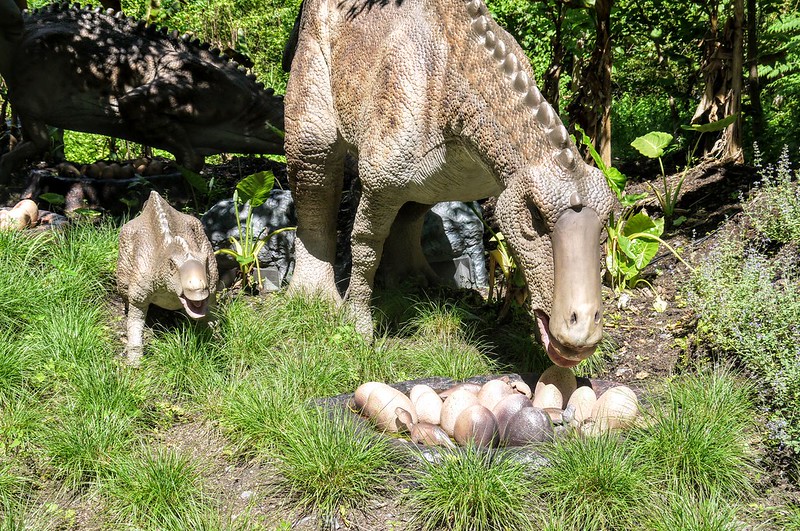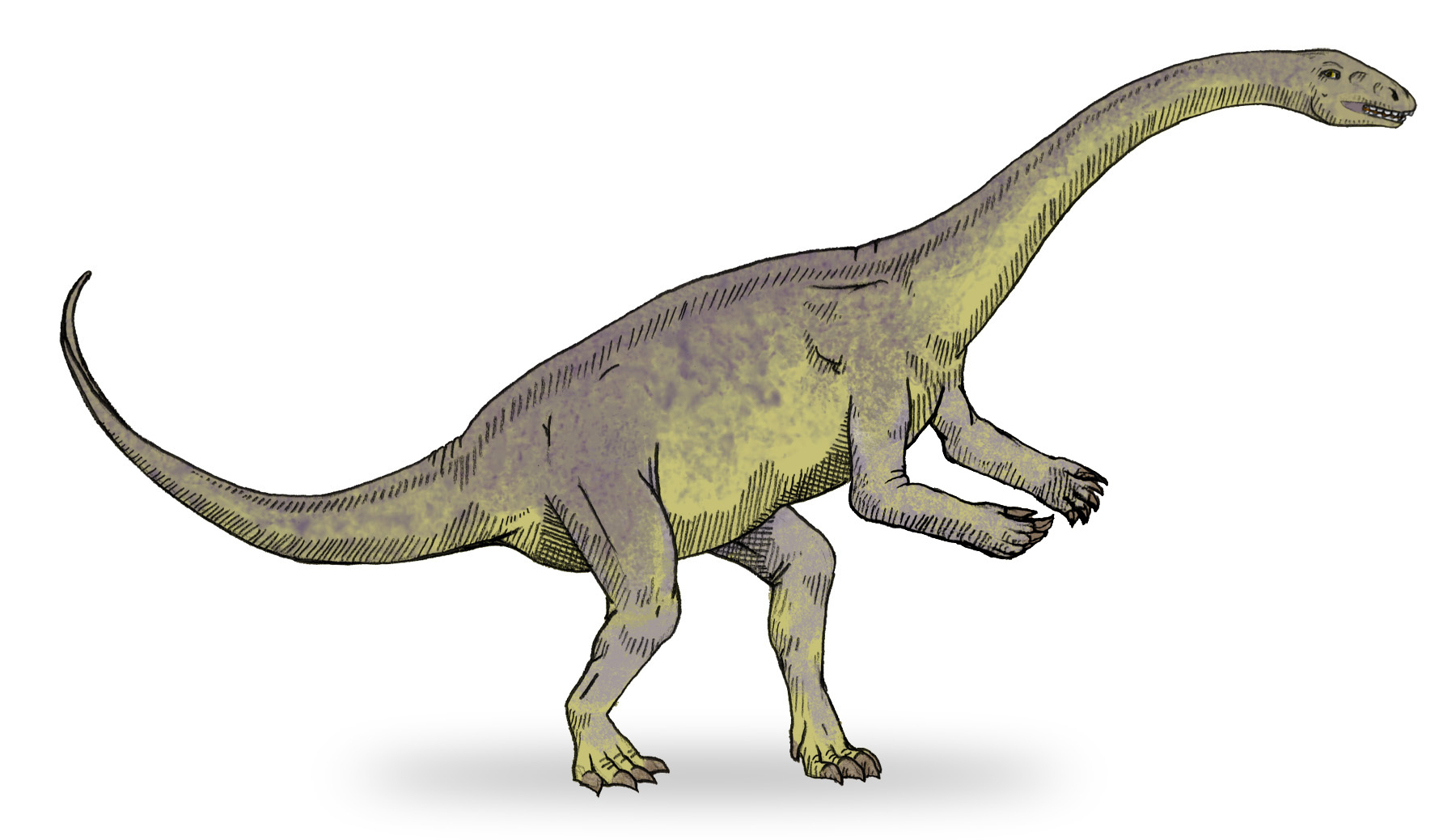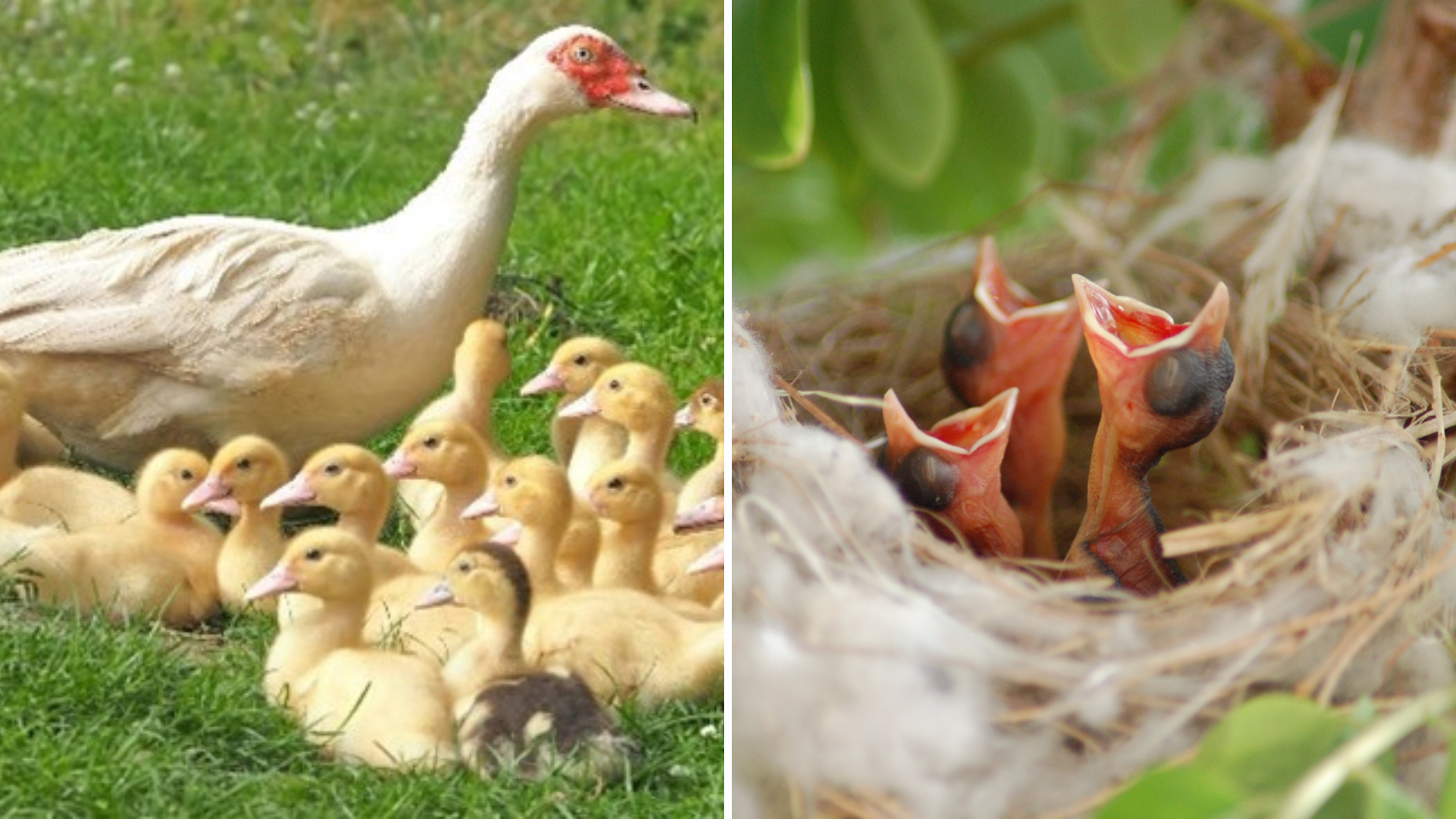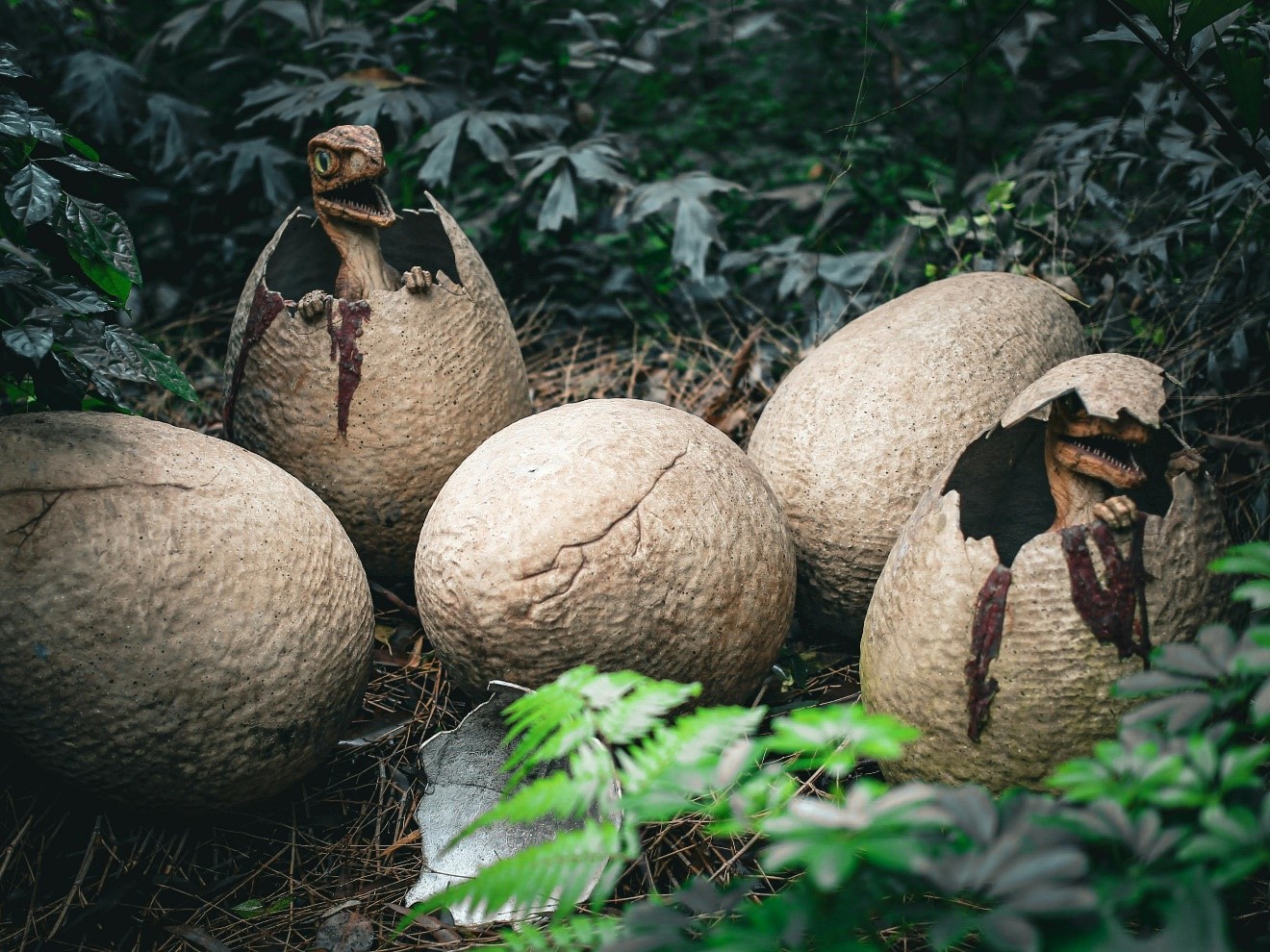Were Tyrannosaurs Good Parents?
We all know the T. rex as the king of the tyrant lizards, a super predator with gigantic teeth and a powerful jaw that could crush bones. But how did it behave around its offspring? Did the T. rex protect its little ones? Or were T. rex babies left to fend for themselves?
Tyrannosaurs Laid Eggs! This We Know for Sure!
Scientists have known for a long time now that dinosaurs laid eggs in their nests, a little like birds and crocodiles do. Many dinosaur nest sites have been discovered all over the world.
We even have proof that this was the case for Tyrannosaurus rex too! Dr. Mary Schweitzer and her colleagues at North Carolina State University found a femur belonging to a T. rex that had a special kind of bone tissue, known as medullary bone. This type of tissue is found in female birds when they are getting ready to lay their eggs. Medullary bone produces calcium that helps form the eggshells. Finding medullary bone in a T. rex specimen means that it was female and was about to lay eggs and become a mom!
What About After the T. rex Hatched?
Once a baby T. rex came out of its shell, did its parents take care of it? Was it fed, protected, and shown how to survive? Or did it have to fend for itself the minute it started chirping?
So that’s where paleontologists get stuck. How can they find this out? They can’t very well go back in time now, can they? So, scientists look for clues by studying nest fossils, egg fossils, and even baby dinosaur bones, but they are still on the lookout for a T. rex nest with baby dinosaur bones (or eggs) in it. No one has made such a discovery yet.
Eggs From Other Dinosaurs
While they search for a T. rex nest, scientists are looking at what they know about other dinosaurs. Other dinosaur families can offer other useful clues.
Good Mothers
Some dinosaurs, like the Maiasaura (which means “good mother lizard”), are famous for their parenting skills. Nests have been found that might suggest that they took care of their hatchlings for some time. Yet, paleontologists still disagree about how much care their little ones actually received.

Several other dinosaurs, like the Oviraptor and the Psittacosaurus, have been found fossilized right on top of their nest, or right next to it, which suggests that they were probably brooding, that is, sitting on their eggs and protecting them.
The Lufengosaurus: Secrets Hidden Inside Baby Dinosaur Bones!
A recent discovery involves a dinosaur that’s even older than the T. rex! The Lufengosaurus is a small (long neck) sauropodomorph dinosaur that lived during the Jurassic period in what is now known as southwestern China.

This discovery comes from paleontologist Dr. Robert Reisz, from the University of Toronto Mississauga, and his colleagues, including a research team in Taiwan, who had a brilliant idea: to study the leg bones of Lufengosaurus babies that had not yet hatched or that had just hatched.
Using state-of-the-art scanning techniques, like computed tomography (also known as a CT scan) and neutron radiography, Dr. Reisz’s team compared these dino leg bones with the leg bones of baby chicks and baby pigeons. Why did they choose to compare them to these baby birds? Because baby chicks are precocial, which means that they can walk about and find their own food shortly after they hatch. Baby pigeons, on the other hand, are altricial, which means that they are completely dependent on their parents when they hatch and cannot survive or develop without them. Dr. Reisz and his team looked to see which legs looked most like those of baby dinosaurs.

On the left: Ducklings, known to be precocial, quickly set off into the world on their own after they hatch. On the right: Altricial nestlings, which are babies too weak to leave the nest without their parents.
The study team found that baby Lufongosaurus legs looked a lot more like baby pigeon legs. They were frail and not sturdy enough to walk on. This means that a baby Lufengosaurus couldn’t just start exploring its environment as soon as it hatched. It very probably needed its parents to bring it food and keep it safe until its bones became strong enough to let it run off into the world. So, it looks like Lufengosaurus hatchlings needed parents that could give them a lot of care.
At the other end of the spectrum, scientists believe that supergiant dinosaurs, like long-necked sauropods, were the kind to “lay them and leave them.” Can you imagine a huge dinosaur, 30 metres long, weighing several tons, sitting on its eggs? Not exactly practical! It's more likely that they buried their eggs and just hoped for the best. But no one has studied giant sauropod bones in the same way Dr. Riesz studied Lufongosaurus bones, so you never know!

So, What Does All This Tell Us About the T. rex?
The verdict? Well, let’s see. We know that T. rex mothers would lay eggs, but we still don’t have any direct proof that they took care of their hatchlings, like Lufengosaurus mothers did.
Looks like we still don’t know if T. rex were good parents, but who knows what future discoveries might tell us about the family life of these kings and queens of the tyrant lizards? Looks like we’ll have to wait and see!
To learn more about the T. rex and see the most scientifically accurate reconstruction of this tyrant lizard, come see our feature exhibition, T. rex: The Ultimate Predator! Take an even bigger bite of the T. rex experience and grab a combo ticket to see the IMAX® film T.REX 3D too!
Written by Aline Zimmermann Maya Simoes
Science editor: Philippe Roberge
